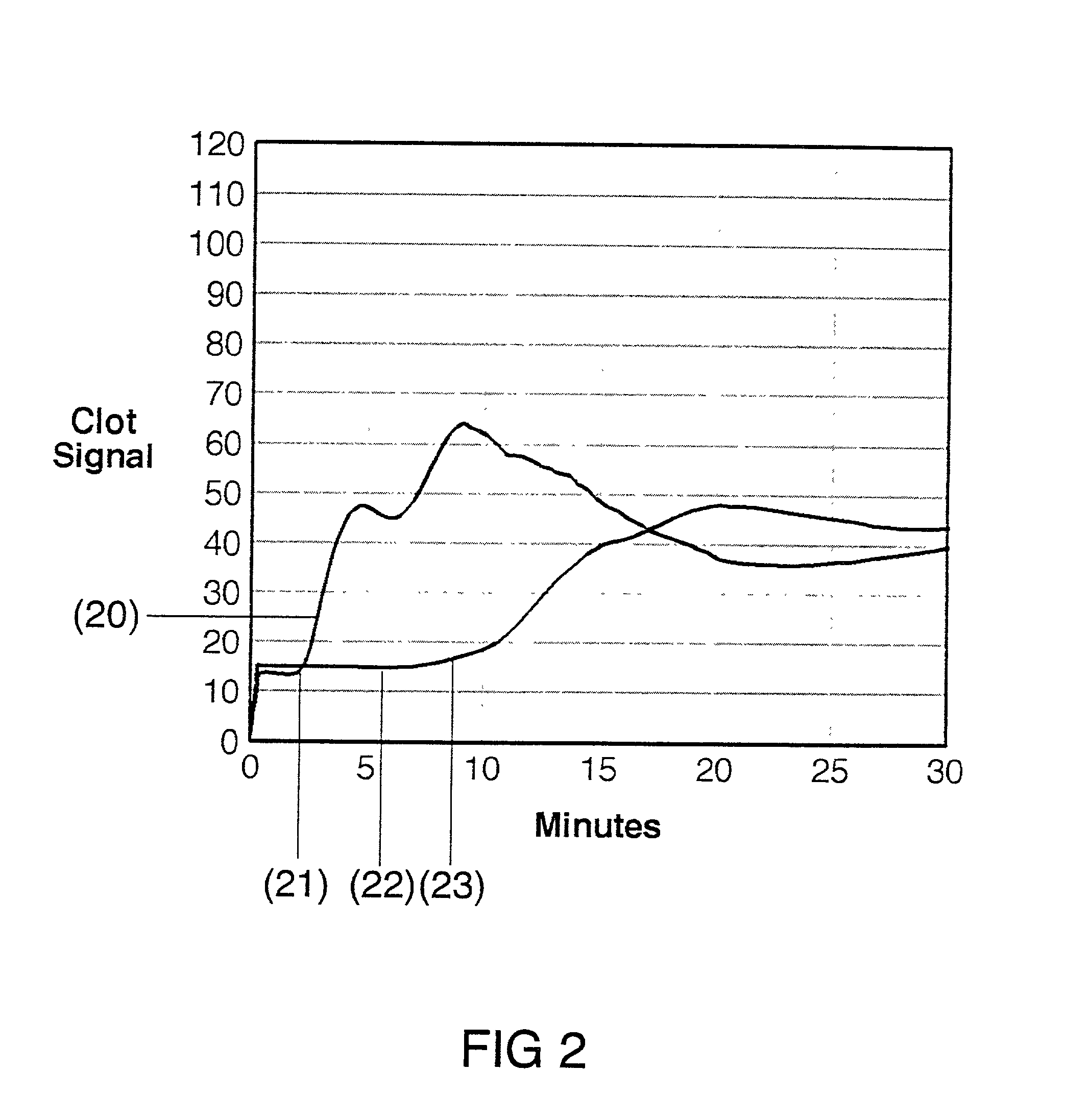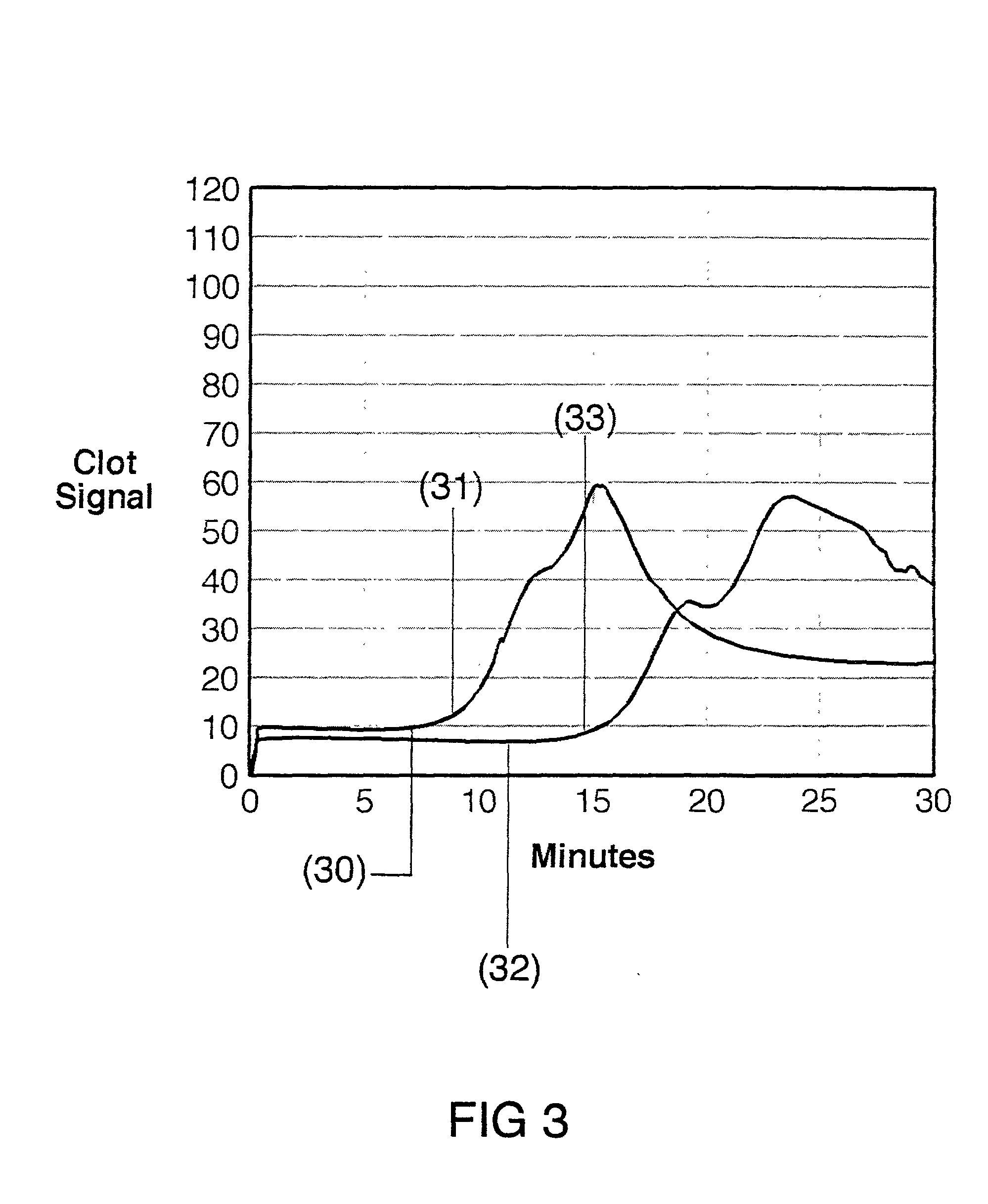Method for performing activated clotting time test with reduced sensitivity to the presence of aprotinin and for assessing aprotinin sensitivity
a technology sensitivity, which is applied in the field of reducing the sensitivity of activated clotting time test to the presence of aprotinin and assessing aprotinin sensitivity, can solve the problems that the celite act result is not a useful measurement of the heparin anticoagulant, the researcher does not fully understand the process or processes, and the presence of heparin, etc., to achieve the effect of prolonging
- Summary
- Abstract
- Description
- Claims
- Application Information
AI Technical Summary
Benefits of technology
Problems solved by technology
Method used
Image
Examples
Embodiment Construction
[0030] The present invention is directed toward an in vitro diagnostic test formulation that shows reduced sensitivity to the presence of aprotinin in heparinized blood samples. The test requires a blood sample container, a contact activation material, an optional mixing apparatus, such as a stir bar, and a means to detect the resulting blood clot. During the development of this invention, a prior art Sonoclot Coagulation & Platelet Function Analyzer manufactured by Sienco, Inc., Morrison, Colo., and described in U.S. Pat. Nos. 5,016,469, 5,138,872, and 5,895,842, was used to monitor the clot formation process and automate the measurement of the ACT result. The Sonoclot Analyzer provides an ACT result and also produces a graph that monitors the changes in viscosity that occur throughout the clot formation process, as illustrated in FIG. 2. This product is useful for research applications because it provides information on the entire clot formation process and requires a small amount...
PUM
| Property | Measurement | Unit |
|---|---|---|
| Time | aaaaa | aaaaa |
| Fraction | aaaaa | aaaaa |
| Fraction | aaaaa | aaaaa |
Abstract
Description
Claims
Application Information
 Login to View More
Login to View More - R&D
- Intellectual Property
- Life Sciences
- Materials
- Tech Scout
- Unparalleled Data Quality
- Higher Quality Content
- 60% Fewer Hallucinations
Browse by: Latest US Patents, China's latest patents, Technical Efficacy Thesaurus, Application Domain, Technology Topic, Popular Technical Reports.
© 2025 PatSnap. All rights reserved.Legal|Privacy policy|Modern Slavery Act Transparency Statement|Sitemap|About US| Contact US: help@patsnap.com



